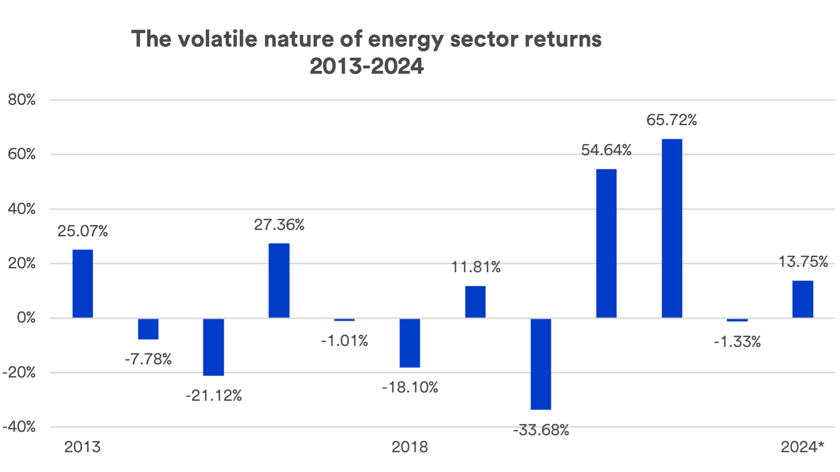While an improved supply-demand balance accounts for the dramatic price drop, “There’s still a tension in the market,” says Rob Haworth, senior investment strategy director at U.S. Bank Wealth Management. “U.S. oil production is high, but OPEC-plus (Organization of Petroleum Exporting) countries are capping output.” Haworth says while oil prices are well down from their 2022 peak, the oil industry remains well positioned. “The key for drilling companies is that the cost of production remains lower than crude oil’s market price. That continues to make the business profitable for well-managed companies.”
How should investors view opportunities in this specialized segment of the market representing a critical part of the global economy?
Role of energy stocks
During the Arab oil embargo and various Middle East conflicts of the 1970s, the energy sector represented approximately 15% of the broader U.S. stock market. Today, it makes up less than 4% of the S&P 500 index.1 “Those numbers might suggest that it is an industry in decline, but energy consumption is up since the 1970s, and the important role energy plays in the broader economy is not diminished,” says Haworth. “From an earnings (profit) perspective, energy stocks play a more prominent role in today's S&P 500 than their index weighting would indicate.”
World oil consumption continues to trend higher with the notable exception of a decline in 2020 as world economies slowed due to the COVID-19 crisis.3







